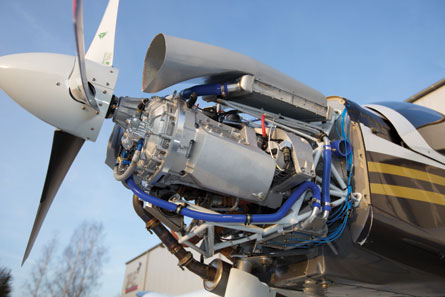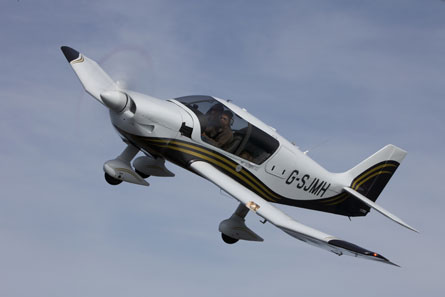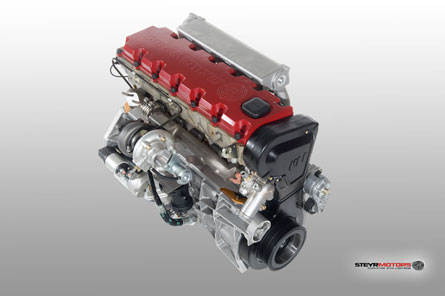Introducing a new contender to the general aviation engine market is a long and expensive process. For decades, the US duopoly of Lycoming and Continental has ruled the roost when it comes to providing powerplants for light aircraft, and attempts by newcomers to carve out a niche or challenge across a broader front have met, at best, with limited success.
At least as challenging has been the long-running effort to introduce diesels to the GA sector. A viable diesel engine is a potential game-changer and, in theory, should be becoming almost a necessity, given the increasing difficulty of sourcing avgas around the world and the relative ease of obtaining diesel fuel.
Importantly, however, avgas remains readily available in North America - the single largest GA market - which has proved something of a dampener on developing oil-burners.
Now that battle has been joined again on several fronts, although smaller European producers face coming up against a diesel from one of the US "big two".
One of diesel's strongest champions, Austria's Diamond Aircraft, hopes to get a new design airborne in its single-engined DA50 Magnum this year, and later in its proposed six-seat twin-engined Future Small Aircraft. Diamond founder and chief executive Christian Dries is looking to the new powerplant to boost sales of the DA50 against piston-single market leader, the Cirrus SR22.
The new engine is being developed by Diamond's engine offshoot, Austro Engines, and fellow Austrian powerplant manufacturer Steyr Motors. It is a 280hp (206kW), six-cylinder engine based on Steyr's M1, used until now for marine and special vehicle applications.
Dries notes that the M1 will require some fairly significant modifications, particularly to lose weight. Steyr Motors founder and chief executive Rudolf Mandorser acknowledges that the weight reduction is "a major task", but says work is well under way and he is confident it can be achieved with no reduction in engine reliability. The amount of weight that has to be shed is covered by a confidentiality agreement with Austro, although Mandorser hopes to give more details soon.
 |
|---|
©Centurion Aircraft EnginesCenturion 2.0 engines equip the Finch Ecoflyer |
Steyr carried out preliminary work on GA diesels some years ago, he says, but a meeting with Dries at an industry exhibition led to an agreement that yielded a concentrated burst of development work on a suitable engine.
Mandorser says the M1 has some design principles that make it suitable for aviation use, notably its monobloc design that incorporates cylinders and cylinder heads - and makes it inherently lighter than others in its class, while avoiding the weaknesses of cylinder head bolts and gaskets. It typically produces as much power as engines with twice its displacement when entered in competitions for military vehicles, he points out.
Acknowledging the difficulties of previous attempts to adapt diesels for aviation, Mandorser says problems have arisen from basing designs on mass-produced automotive components. But Steyr is different, he says.
"We develop all aspects of the engine ourselves," he explains. "We don't rely on commercial, mass-production technology and so we don't have to accept compromises.
"For example, we have always developed our own [fuel] injection equipment, which is a high-pressure unit injector fully capable of handling JP8 and Jet A1."
Should the M1's electronic control system fail, a full mechanical back-up system allows it to continue running - a feature Mandorser believes to be unique. "In a worst-case scenario, an operator can go fully mechanical," he says.
Adapting components from external suppliers has been problematic, says Mandorser, but stresses he is not criticising previous efforts to produce a GA diesel. "You can see what's been achieved through co-operation between Thielert and Diamond," he adds.
And despite previous problems in developing diesels for the GA sector, Mandorser is convinced that the argument for them has already been won. He believes technological advances will come in areas such as permanent magnet generators to feed the increasing need for electrical power in light aircraft.
Meanwhile, Thielert's sales and marketing operation trades as Centurion Aircraft Engines to distinguish it from the parent company that has been in insolvency protection since 2008, and focuses on its Centurion 2.0 series diesel piston powerplant.
The engine's working life has been extended to 1,500h, but plans for a further extension to 1,800h have not materialised. Head of corporate communications Sebastian Wentzler says development resources remain tight and strategic decisions will probably have to await until a new investor is on board, but he hints there may be something to report later this year.
Wentzler says the General Aviation Manufacturers Association's 2010 statistics recorded a 7% drop in piston engine sales, which makes expansion for any engine manufacturer difficult. He sees diesels as the only practical way forward.
"Everything is turning to alternative fuels and, generally speaking, alternative fuels are only possible with diesels," he says. "Most old avgas engines are never likely to run on biofuels." But it could take 15-25 years for diesels' supremacy to be confirmed, he concedes.
Only when avgas availability starts to drop will diesel make headway in North America, the largest GA market, so Centurion is concentrating its efforts in Europe and Asia, where diesel is increasingly the fuel of choice.
 |
|---|
©Centurion Aircraft EnginesCenturion is targeting diesel-friendly Asia |
Early adopters are typically heavier-than-average users, such as flying clubs and flight schools, which welcome diesel's more economical fuel consumption and superior reliability. Centurion has seen Federal Aviation Administration data showing that diesels experience about half as many in-flight shutdowns as conventional engines do, he says.
Wentzler foresees the greatest future demand for piston-engined aircraft coming from China, where lower airspace is being opened up. This should encourage growth in flight training, with China's burgeoning middle classes seeking new outlets for their money. A purely private market may then follow.
UAV market
Centurion supplies a proportion of its engines to the unmanned air vehicle market, and much of its work here is covered by non-disclosure agreements, says Wentzler. However, "between 20% and 40%" of the 300-350 engines it produces each year go to OEMs, with the rest going into the retrofit market.
Another prospective entrant hoping for a comeback is Switzerland's Mistral Engines. For 10 years, Mistral tried to get its G-300 normally aspirated design, based on the Wankel rotary engine, into production. It suspended development last June, with chief executive Philippe Durr citing a "terribly frustrating" funding shortage when the engine was close to completing FAA certification.
The powerplant's selling points included the lack of vibration of a rotary design and the ability to run on any type of car fuel or avgas. Development of a version that would run on Jet A-1 was said to be well advanced.
Intriguingly, Mistral says there may be developments in the G-300 saga within the next few weeks, but declines to elaborate.
Some mystery also surrounds what could be the biggest competitor to European efforts to exploit the diesel market. Teledyne Continental Motors is working on a diesel engine it hopes to launch into the OEM market in 2012 and into the aftermarket the following year.
It declines to discuss the origins of the engine, reported to be a development of a powerplant licensed from France's SMA. Like its European counterparts, Teledyne Continental is looking ahead to a time when avgas is no longer as readily available, and wants to be prepared when this happens.
"It's a good engine, a sound engine - there are just a few areas we need to develop," says Jim Ray, who is managing the project.
Teledyne Continental is looking initially at a four-cylinder model developing 230-250hp. This will be followed - probably around 2014 - by a six-cylinder design with a maximum output of about 400hp.
Michael Gifford, director of customer service, marketing and sales, says the diesel is focused on the OEM market, with retrofit secondary. "We've had a lot of interest," he says.
 |
|---|
©Stery MotorsWeight reduction is Steyr's "major task" |
"In North America, it has appeal from the efficiency point of view, but the international market is stronger because of the availability of Jet-A, while 100LL is not available at all. But there's still demand from here in North America, just because of the efficiency of it."
The company believes popularity in the spiritual home of general aviation will grow as the availability of avgas starts to diminish.
Technical support manager Bill Ross says it is hard to know where the market will be in five years' time. "We have such a legacy market powered by Continental engines that are still going strong," he says. "Even in five years, diesel is still going to be a small, but important, segment of the overall business."
Ross believes one factor in the diesel's favour is its reduced maintenance requirement. "Maintenance is dramatically different, and that's one of the attractions."
Source: Flight International


























